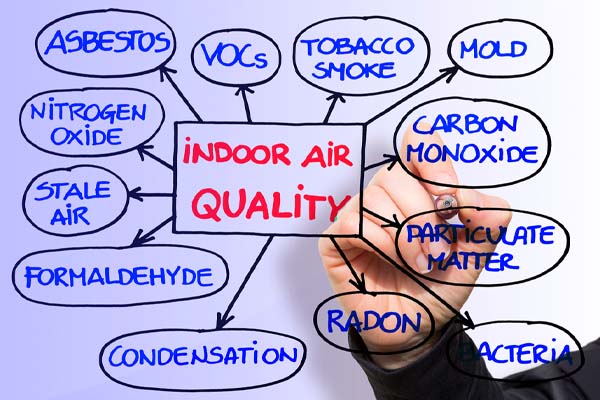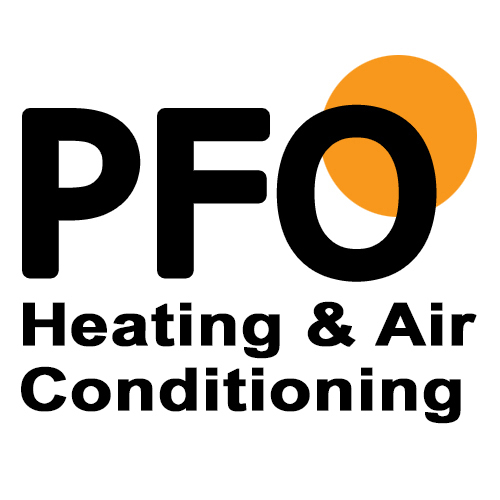
HVAC systems are not only vital for maintaining a pleasant indoor climate, but they are also significant contributors to a building’s overall energy use and associated costs. One method that has been found to effectively decrease the energy consumption and costs associated with HVAC systems is the implementation of HVAC zones.
In the context of HVAC systems, comfort zones refer to designated areas within a structure that are set to maintain a specific temperature range. These zones are designed to deliver optimal comfort to occupants while keeping energy use as low as possible. By establishing and maintaining these comfort zones, the HVAC system is able to concentrate its heating or cooling efforts on only the areas that require it, reducing unnecessary energy use.
Understanding How HVAC Comfort Zones Contribute to Energy Cost Reduction
Contents
HVAC systems are responsible for a significant proportion of energy use in residential properties, and this proportion can reach up to 40% in commercial buildings. The American Society of Heating, Refrigerating, and Air-Conditioning Engineers (ASHRAE) suggests a temperature range of 68°F to 78°F for heating and cooling purposes. Keeping temperatures within this recommended range can help to create a comfortable indoor environment and also cut down on energy use.
Decreasing the Demand on HVAC Systems
One of the advantages of using a zoning system is that it allows you to divide your home or building into different temperature zones. This means that your HVAC system does not need to distribute air throughout the entire building continuously, which can be quite taxing. By maintaining the temperature at the desired level in each area, energy wastage can be mitigated, and the strain on the system can be reduced. With a lighter workload, your HVAC system will use less fuel, and its components will experience less wear and tear.
Related Article: What To Do When Your Outside AC Unit Keeps Tripping The Breaker
Regulating Heating & Cooling Temperatures

Zoning systems are particularly beneficial in homes where each zone is fitted with a thermostat, enabling temperature regulation in each space according to personal preferences. This feature not only offers homeowners the opportunity to save money by avoiding the unnecessary heating or cooling of unoccupied rooms or areas but also reduces potential conflicts over indoor temperature. An additional benefit of having a programmable thermostat is the convenience of remote control through a smartphone or other mobile device.
Avoiding Heating or Cooling of Unused Spaces
Zoning systems give homeowners greater control over which parts of their home are heated or cooled, leading to potential savings on energy costs. By avoiding heating or cooling unused rooms, the volume of air that needs to be heated or cooled and distributed can be significantly reduced, which increases energy savings.
However, care must be taken not to inadvertently cause problems with your HVAC system by closing vents or obstructing air flow to a room. This can result in increased air pressure, reduced efficiency, and overall damage to the system. A zoning system provides a more efficient and effective way to manage the temperature and airflow in your home without jeopardizing the health and performance of the HVAC system.
Related Article: What’s The Difference Between A/C Condensers & Evaporator Coils?
Enhancing Air Quality

Over time, HVAC systems are likely to encounter dust, pollen, pet dander, and other airborne irritants. If someone in your home suffers from allergies or respiratory problems, they are probably already aware of the issues these particles can cause. A zoning system can help to reduce the exposure to these irritants.
Homes equipped with zoning systems usually have less air movement between spaces compared to homes with traditional heating and cooling systems. This reduced air movement means that contaminants are less likely to spread throughout your home at the same rate. As a result of this zoning separation, less dust and debris will accumulate in your home, making it easier to clean and maintain your furniture, electronics, and other valuable items.
Reducing the Need for Maintenance & HVAC Repair Costs
For an HVAC system to deliver optimal performance, it’s critical that all of its components are functioning correctly. Components that are continuously in operation, such as those that work 24 hours a day for most of the year, will understandably wear out faster than parts that have regular rest periods. Repairing different parts of your HVAC system can lead to high costs, especially if the system has been overused. These costs can become even more prohibitive if your system fails at inconvenient times.
When HVAC comfort zones are implemented, the workload on your system decreases. This reduced strain leads to lower maintenance and repair costs.
Related Article: Why Your Air Conditioner Is Not Removing Humidity
Extending the Life of HVAC Systems
The lifespan of your HVAC system is largely determined by the amount of wear and tear it experiences over time. Generally, homes with zoning systems tend to experience less wear and tear on their HVAC systems.
Programmable thermostats can further extend the life of your HVAC system by allowing you to adjust the system to work less when you’re not at home or when everyone is asleep. In addition, the position and condition of rooms can affect heating and cooling needs – rooms that get a lot of sunlight in the winter will need less heating than those on the other side of your home, while a shaded room in the summer will require less cooling. By reducing the workload of your HVAC system in these ways, its lifespan can be significantly extended.
Certain zoning systems can also help you keep track of maintenance schedules, which can, in turn, extend the lifespan of your HVAC system. Some of these systems can alert you when it’s time to change air filters or schedule routine maintenance visits with an HVAC specialist. Other systems even offer the ability to monitor the humidity and airflow in your home.
Related Article: Top Signs Your Furnace Is Overheating
Enhancing Comfort Levels
With a zoning system, each member of the household can set a consistent temperature for their bedroom or favorite space in the house. This means that each person can enjoy their own level of comfort without having to constantly adjust the temperature for the entire home.
The benefits of a zoning system extend beyond comfort and convenience. By allowing individualized heating and cooling, zoning systems can also save you money on your monthly energy bills. When the energy used to heat and cool each area of your home is consistent, it’s easier to predict your monthly expenses before the bill even arrives.
Related Article: What Does AFUE Rating Really Mean?
Conclusion
In conclusion, optimizing HVAC comfort zones is a powerful and effective strategy for reducing energy costs while promoting occupant comfort and satisfaction. As sustainability and energy efficiency continue to gain importance in our lives, the optimization of HVAC systems through comfort zones offers a promising solution that can benefit both our environment and our financial bottom line.
Related Article: What Can I Expect During My HVAC Installation?
Call PFO Heating & Air Conditioning For All Of Your HVAC Needs

PFO Heating & Air Conditioning, as the leading provider of heating and cooling services in the service area, boasts a team of certified technicians who are experts in HVAC tune-ups, repairs, installations, replacements, and more. We are the most trusted name when it comes to reliable HVAC service, and we are always ready to assist you!
We pride ourselves on offering the most affordable heating and cooling services in the area. Our services are designed to enhance comfort and energy efficiency while helping to reduce your heating and cooling costs. We can recommend the best HVAC solution for your home or business that fits within your budget. We guarantee the quality of all our work to ensure your satisfaction. Contact PFO Heating & Air Conditioning today to schedule a service appointment. We look forward to serving you!
Click here to contact us now or call us at (800) 253-9001 to find out more! Click the link to view our service area.



